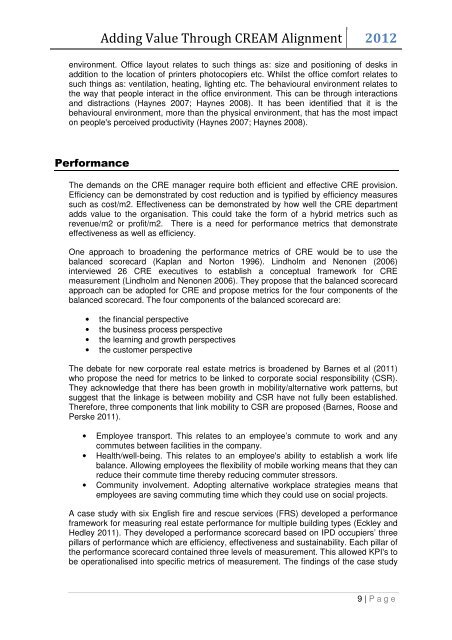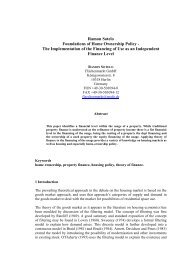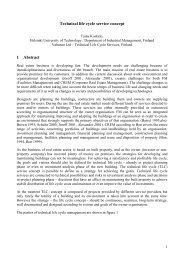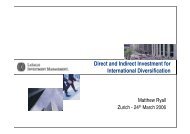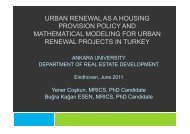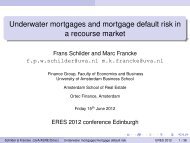Adding Value Through CREAM Alignment
Adding Value Through CREAM Alignment
Adding Value Through CREAM Alignment
Create successful ePaper yourself
Turn your PDF publications into a flip-book with our unique Google optimized e-Paper software.
<strong>Adding</strong> <strong>Value</strong> <strong>Through</strong> <strong>CREAM</strong> <strong>Alignment</strong> 2012environment. Office layout relates to such things as: size and positioning of desks inaddition to the location of printers photocopiers etc. Whilst the office comfort relates tosuch things as: ventilation, heating, lighting etc. The behavioural environment relates tothe way that people interact in the office environment. This can be through interactionsand distractions (Haynes 2007; Haynes 2008). It has been identified that it is thebehavioural environment, more than the physical environment, that has the most impacton people's perceived productivity (Haynes 2007; Haynes 2008).PerformanceThe demands on the CRE manager require both efficient and effective CRE provision.Efficiency can be demonstrated by cost reduction and is typified by efficiency measuressuch as cost/m2. Effectiveness can be demonstrated by how well the CRE departmentadds value to the organisation. This could take the form of a hybrid metrics such asrevenue/m2 or profit/m2. There is a need for performance metrics that demonstrateeffectiveness as well as efficiency.One approach to broadening the performance metrics of CRE would be to use thebalanced scorecard (Kaplan and Norton 1996). Lindholm and Nenonen (2006)interviewed 26 CRE executives to establish a conceptual framework for CREmeasurement (Lindholm and Nenonen 2006). They propose that the balanced scorecardapproach can be adopted for CRE and propose metrics for the four components of thebalanced scorecard. The four components of the balanced scorecard are:• the financial perspective• the business process perspective• the learning and growth perspectives• the customer perspectiveThe debate for new corporate real estate metrics is broadened by Barnes et al (2011)who propose the need for metrics to be linked to corporate social responsibility (CSR).They acknowledge that there has been growth in mobility/alternative work patterns, butsuggest that the linkage is between mobility and CSR have not fully been established.Therefore, three components that link mobility to CSR are proposed (Barnes, Roose andPerske 2011).• Employee transport. This relates to an employee’s commute to work and anycommutes between facilities in the company.• Health/well-being. This relates to an employee's ability to establish a work lifebalance. Allowing employees the flexibility of mobile working means that they canreduce their commute time thereby reducing commuter stressors.• Community involvement. Adopting alternative workplace strategies means thatemployees are saving commuting time which they could use on social projects.A case study with six English fire and rescue services (FRS) developed a performanceframework for measuring real estate performance for multiple building types (Eckley andHedley 2011). They developed a performance scorecard based on IPD occupiers’ threepillars of performance which are efficiency, effectiveness and sustainability. Each pillar ofthe performance scorecard contained three levels of measurement. This allowed KPI's tobe operationalised into specific metrics of measurement. The findings of the case study9 | P a g e


